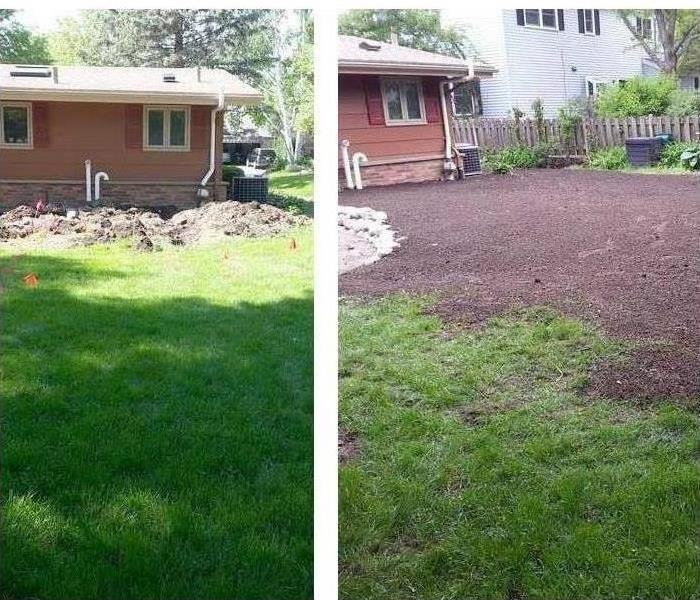How does your home rate in preventing water damage?
3/20/2022 (Permalink)
Certain factors which eliminate the potential for water damage should be a top priority whether you are shopping for a pre-existing home or property on which you plan to build your own home. Yard grading is a construction or landscaping technique that changes a property’s directional slope.
A pre-existing home that sits on land that slopes downward towards its foundation could be in for destruction after heavy rains, storms and melting snow. Changing the grade to slope away from its foundation effectively could eliminate these risks.
Yard grading around a pre-existing structure can be accomplished by clearing all landscaping within a five-foot area around the home’s perimeter. Low-lying spots or lawn dips could result in post-storm mud and small pools of water. Fill the dips up with clean soil and use a compactor to tamp down the soil.
Another method some homeowners choose to employ is to install a dry creek bed straight up the middle of their land and fill it in with attractive river rocks. This bed-like feature draws runoff deep down into the earth, keeping above-ground outbuildings dry.
If you are considering designing your own home, it’s a lot cheaper to change the home's design than regrade the ground. Draw home plans with the structure on highest ground point. Try to leave at least six inches between the home’s perimeter and landscape plantings.
Some homeowners install gutter systems that are easy to maintain consistently or place river rocks around downspouts, so runoff doesn’t create sinkholes. Homeowners may choose to install double-pane windows or water resistant flooring. Central heat and air units with dehumidifying systems could also help. Area rugs made from natural fibers that are washable and furniture made of moisture repellent materials like bamboo could also prevent moisture build up. Be sure to insulate any plumbing against condensation and
seal air ducts thoroughly, paying close attention to adjoining seams.
Once you have established a safe, water-tight home environment, you are ready to move into your new residence.



 24/7 Emergency Service
24/7 Emergency Service
